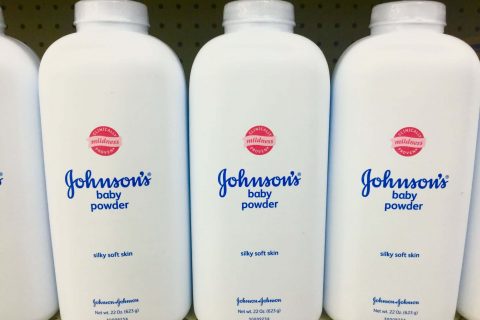Talc in Makeup
Talc, commonly found in cosmetics and makeup, has raised safety concerns due to potential contamination with asbestos, a toxic mineral. Lawsuits have been filed by individuals who claim their illnesses were caused by using talc products contaminated with asbestos.
- Last update: June 12, 2025
Cosmetic Use of Talc
Talc is a common ingredient used in blush, eyeshadow, foundation and many other beauty products. The soft mineral gives makeup a silky texture that makes it easier to apply. Talc also absorbs oil, prevents caking and makes facial makeup more translucent.
Cosmetic uses of talc date back centuries. Egyptians used the mineral to lighten their skin. People in China made similar face powders from rice powder mixed with ground talc and a type of clay called kaolin.
The manufacturing of cosmetics is a multibillion-dollar industry today, and one that relies heavily on the use of talc.
- Blush
- Bronzer
- Concealer
- Eyebrow pencil
- Eyeliner
- Eye shadow
- Face masks
- Face powder
- Foundation
- Lipstick
- Lotion
- Mascara
- Moisturizing cream
- Rouge
The amount of talc in makeup differs depending on the product. Face powders often contain up to 100% talc, according to a safety report from the Cosmetic Ingredient Review Expert Panel. Other products, such as aerosol makeup bases, can contain up to 35% talc.
Asbestos-Contaminated Talc in Makeup
Talc and asbestos are naturally occurring minerals that can form near one another beneath the Earth’s surface. This heightens the risk of asbestos-contaminated talc finding its way into makeup products.
Asbestos, although highly toxic, was used for decades in industries such as construction, firefighting, shipbuilding and more because of its heat resistance. It was also used in many household products.
The Environmental Working Group in 2020 presented results of tests by the Scientific Analytical Institute, which found asbestos in three of 21 cosmetic products (14%). The products included two eye shadow pallets and one toy makeup kit marketed to children. In 2019, tests done on adult and children’s makeup products found traces of asbestos contamination.
A 2018 study by the U.S. Public Interest Research Group reported high levels of asbestos in three types of makeup sold by Claire’s. The retailer declared bankruptcy, but has since rebounded. That same year, Justice, a retail clothing store owned by Ascena Retail Group Inc., recalled eight “Just Shine” makeup products that contained the toxic fibrous mineral.
Long-term exposure to asbestos increases the risks of cancers, particularly mesothelioma. Exposure to asbestos also raises the risk of ovarian cancer and laryngeal cancer. The Occupational Safety and Health Administration warns that there is no safe level of exposure to asbestos.
Other Potential Links to Cancer
The World Health Organization’s International Agency for Research on Cancer has deemed genital use of talcum powder possibly carcinogenic to humans.
Various studies have concluded that the long-term use of talcum powder near the genital area may increase a woman’s risk of developing ovarian cancer by 30% to 60%. Researchers found talc particles deeply embedded in the tissue of ovarian and cervical tumors of women who used the powder near their genitals for decades.
Some researchers — and plaintiffs in legal claims — claim talcum powder causes the rare cancer mesothelioma, which is caused by long-term exposure to asbestos. Other possible diseases linked to talcum powder include lung cancer, uterine cancer and cervical cancer.
A working group for the International Agency for Research on Cancer published a study that said, in part, that limited evidence existed that talc without asbestos or asbestiform fibers was cancerous to mice and hamsters. Asbestos-free talc use by humans on the female perineum was “possibly carcinogenic,” but the same talc, when inhaled, did not lead to cancer.
Another study found that 75% of women with ovarian or cervical cancer had talc particles in their cancerous tumors. Researchers found particles concentrated deep and non-dispersed in tumorous tissues. Other studies, however, have not connected talc to cancer.
Calling this number connects you with a Drugwatch.com representative. We will direct you to one of our trusted legal partners for a free case review.
Drugwatch.com's trusted legal partners support the organization's mission to keep people safe from dangerous drugs and medical devices. For more information, visit our partners page.




